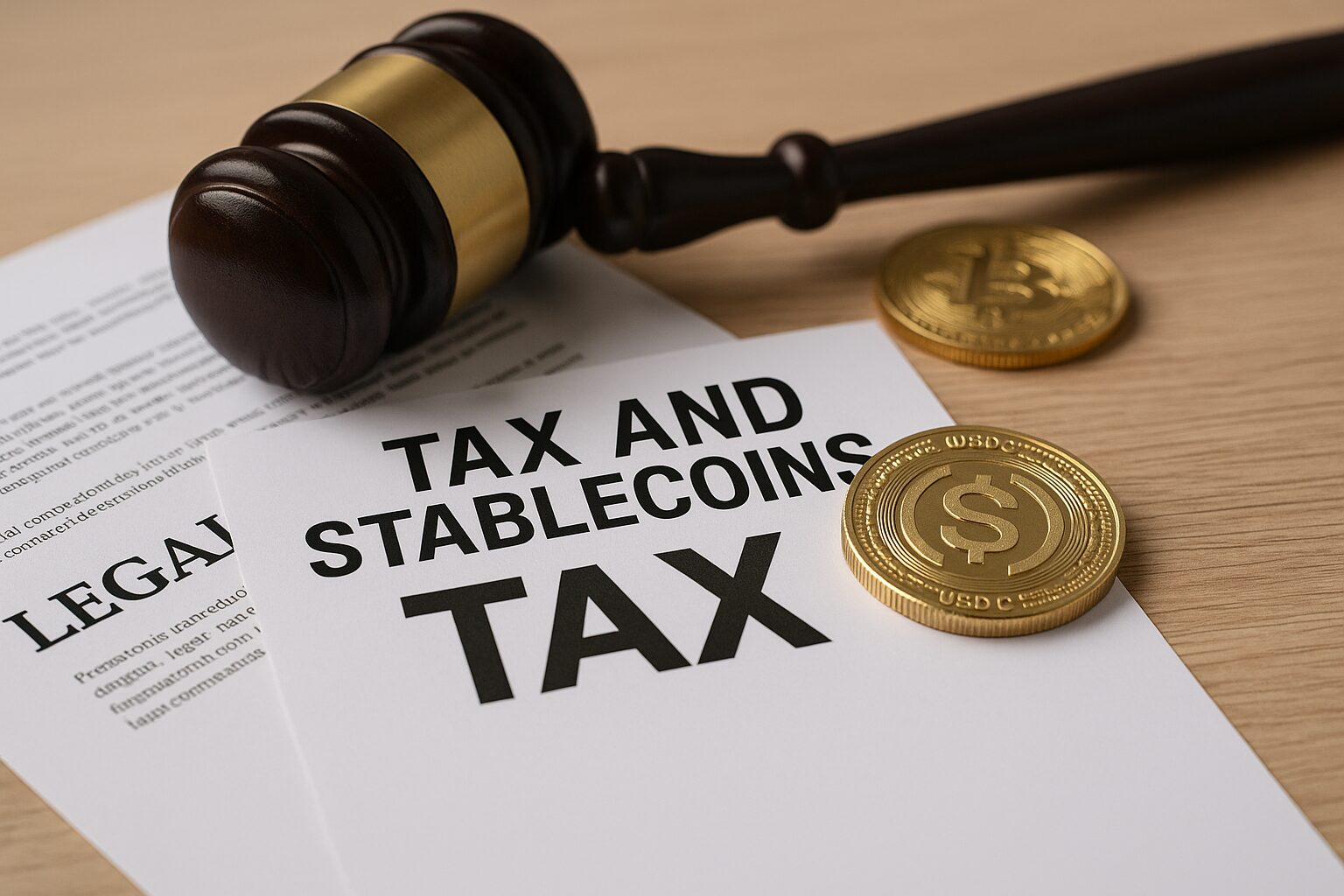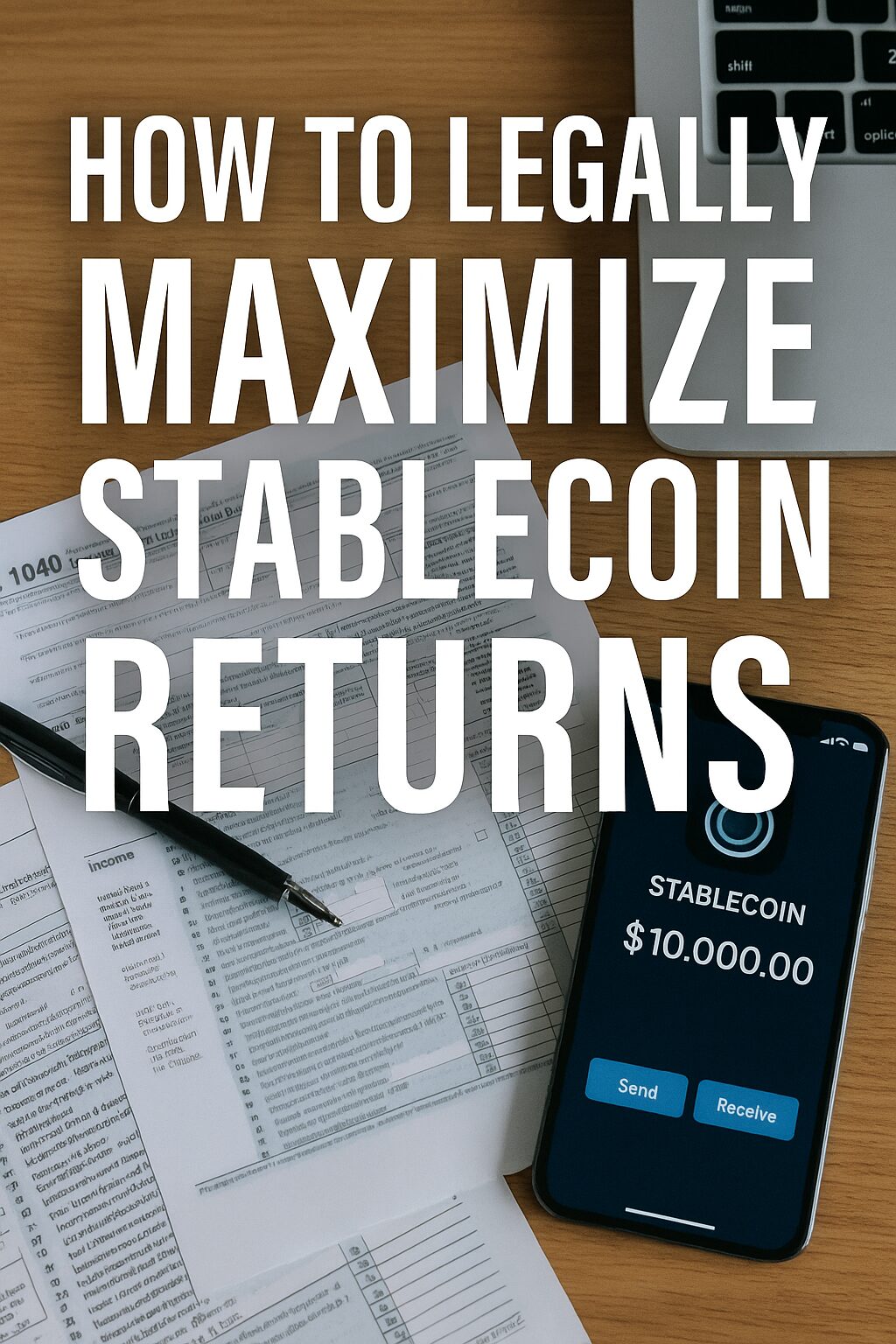Stablecoins are no longer just an investment asset — they’ve evolved into an entire ecosystem for living, earning, saving, and spending. But managing a life entirely in stablecoins requires more than just holding USDC in a wallet. You need tools: smart, reliable, and battle-tested platforms that help you track income, deploy assets, spend safely, and stay compliant.
This isn’t a theoretical wish list — this is a practical stack used by people who actually live off stablecoins. Digital nomads, crypto-native business owners, remote freelancers paid in USDT, and even offshore asset managers.
In this post, we’ll break down the seven essential tools that can power your stablecoin life:
- The best dashboards to track everything in one view
- Cards that let you spend stablecoins like fiat
- Automation tools for yield, income, and rebalancing
- Off-ramp and tax platforms that keep you compliant
If you want to live 100% on-chain without sacrificing control or peace of mind — these are the tools you can’t ignore.
1. Zapper — The All-in-One Dashboard for DeFi and Stablecoin Portfolios
Zapper allows you to connect multiple wallets (Ethereum, Arbitrum, Polygon, and more) and view your entire stablecoin and DeFi exposure in one clean dashboard. You can track:
- Total portfolio value
- Real-time APY from DeFi vaults
- Lending positions and borrow rates
- Gas usage and wallet activity
It’s ideal for managing multiple stablecoin layers — from your liquidity stack to growth and yield allocations. It also lets you zap into or out of positions with one click.
2. Crypto.com Visa Card / Binance Card / Plutus — Spend Stablecoins Globally
These crypto debit cards allow you to convert USDC or USDT directly to fiat at the point of sale. That means groceries, restaurants, or even plane tickets — all paid in stablecoins.
- Crypto.com Card: Cashback up to 5%, supports USDC, requires CRO stake.
- Binance Card: Seamless USDT/USDC conversion, no FX fees, works in 60+ countries.
- Plutus Card: Focused on Europe, includes reward tokens and Netflix/Spotify perks.
If you’re living off stablecoins, this is your primary tool for making crypto spendable in the real world.
3. Yearn Finance / Beefy / Idle — Auto-Compounding Yield Vaults
These vaults automate the process of earning and reinvesting yield from stablecoin strategies. You don’t have to manually harvest rewards or switch pools — the platforms optimize for yield 24/7.
- Yearn: Curated, battle-tested vaults, mostly on Ethereum.
- Beefy: Multichain support, including Polygon and BNB Chain.
- Idle Finance: Automatically rotates between highest-yielding stablecoin lending protocols.
Perfect for the “set and forget” part of your yield layer.
4. DeFi Saver — Yield and Rebalancing Automation
DeFi Saver is an automation tool that lets you build “recipes” for your stablecoin deployment. For example:
- Rebalance from DAI to USDC if APY drops below 4%
- Withdraw 10% of yield every month to a spending wallet
- Auto-repay loans to avoid liquidation
You can automate much of your stablecoin logic without coding, using pre-built strategies.
5. Koinly / Accointing — Crypto Tax and Income Tracking
These platforms are essential if you’re serious about compliance. They pull your wallet data, categorize transactions, and generate localized tax reports.
- Koinly: Supports 20+ countries, handles staking/yield rewards properly.
- Accointing: Strong DeFi and NFT support, with integration to TurboTax.
They’re also useful for freelancers and consultants who receive stablecoin income — especially if invoicing and tax reporting are required.
6. Mt. Pelerin / Transak / Kraken / Wise — Off-Ramp Services
When you need to move from stablecoins to fiat (for a landlord, lawyer, or legacy system), these platforms offer seamless fiat conversion.
- Mt. Pelerin: Europe-focused, instant SEPA/IBAN payouts for USDC/DAI.
- Transak: Global coverage, offers bank withdrawals in 50+ countries.
- Kraken: US-based exchange with strong fiat gateway.
- Wise: Use stablecoin-powered cards to transfer balance to bank accounts.
Choose based on your jurisdiction and fee tolerance.
7. Notion / Tally / Airtable — Operational Command Center
If you’re managing multiple wallets, income sources, and automations, you need a human-readable dashboard. Use Notion or Airtable to:
- Track yield, capital allocation, and fees
- Set monthly goals and targets
- Plan tax withdrawals and off-ramp events
- Maintain a vault/wallet inventory
This gives your crypto life structure — and lets you run it like a business.
Final Thoughts
Living entirely on stablecoins is not a dream — it’s a system. With the right tools, your financial life becomes automated, transparent, and borderless. You’re not just investing — you’re operating a sovereign, portable economy. Start building your stack today.
Real-Life User Stacks: How People Actually Use These Tools
To move beyond theory, let’s examine how real people — from digital nomads to remote business owners — use these tools to run their stablecoin-based lives.
Case 1: Remote Tech Consultant in Portugal
- Income: Paid in USDC monthly from clients via Circle
- Dashboard: Zapper to track earnings, yield, and cash flow
- Yield: Deposits in Yearn USDC vault, automated via DeFi Saver
- Spending: Uses Binance Card for daily expenses in Lisbon
- Off-Ramp: Mt. Pelerin to transfer larger payments to EU bank
- Tax: Files through Koinly, syncs wallets + Binance
This user essentially runs a self-directed, crypto-powered salary stream without touching volatile assets. No employer paperwork, no forced conversion to fiat.
Case 2: Freelance Designer in Thailand
- Income: Receives USDT via smart contract payment platforms (like Utopia or Superfluid)
- Dashboard: Manages balances in Notion and MetaMask
- Spending: Plutus card for cafes, shopping, and travel
- Yield: Idle Finance vaults on Polygon
- Automation: Monthly USDT to THB via Transak
- Tax: Minimal — operates under foreign earned income exemption
This stack is ultra-lean and mobile. Everything fits on a laptop and phone. Perfect for fast travel and lightweight living.
Case 3: Asset Manager in Singapore
- Assets: Manages $2M in institutional stablecoins (USDC, EURC, GUSD)
- Tracking: Uses Airtable for compliance and position breakdown
- Yield: Combines Beefy vaults with on-chain T-bills (e.g., Ondo, Mountain Protocol)
- Disbursements: Monthly fiat to clients via Wise
- Compliance: Generates reports using Accointing + API links to custodians
This isn’t a hobbyist setup — it’s a scalable, regulated, multi-client crypto treasury powered entirely by stablecoins.
These stacks prove that stablecoin infrastructure is more than just DeFi buzz — it’s the backbone of a parallel financial system that’s live, proven, and quietly growing.
📌 Coming Up Next
How to Protect Your Stablecoin Wealth in a Bankrupt World — Legal, Structural, and Asset-Level Shields
→ In the next post, we’ll dive deep into how to legally protect your stablecoin holdings — from choosing the right jurisdictions to using crypto trusts, smart contracts, and multisig vaults. Perfect for those preparing for the next financial crisis or seeking bulletproof privacy.



